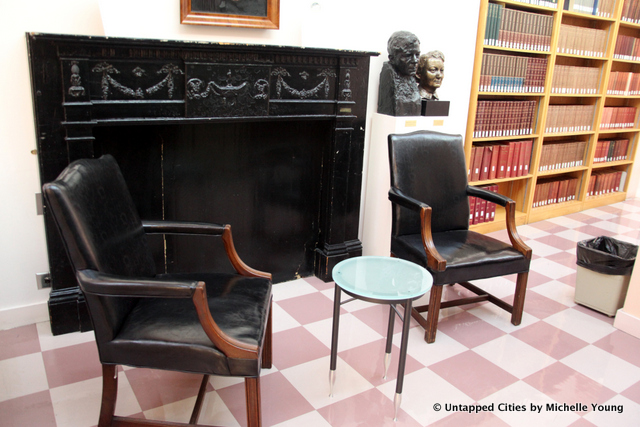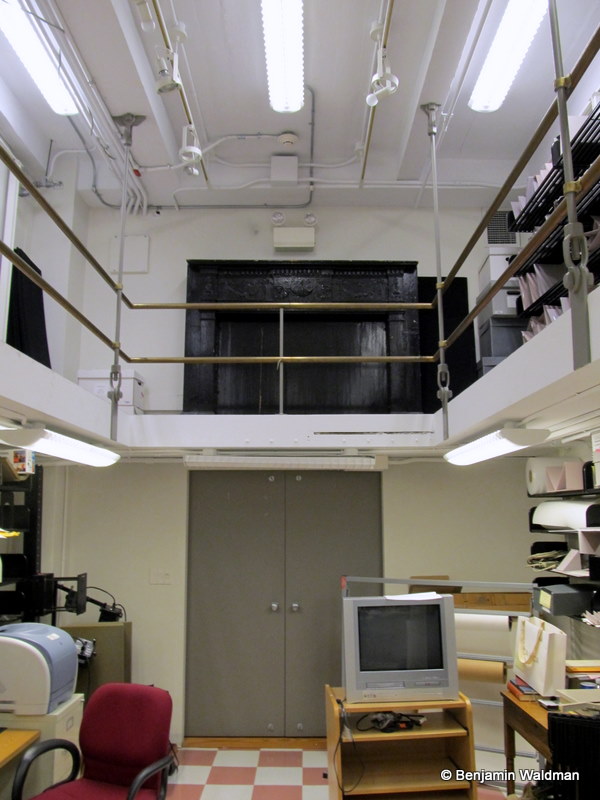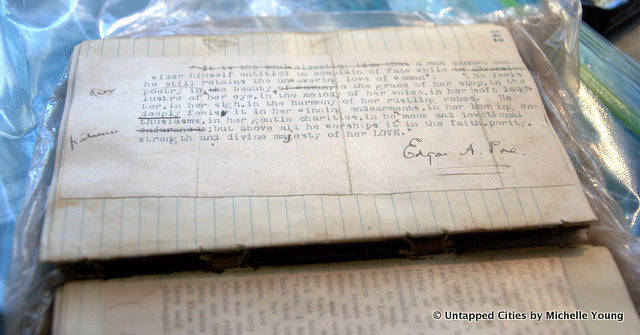
A couple years ago, we sent Untapped Cities editor Benjamin Waldman on a quest to track down places that memorialize Edgar Allan Poe. In the process, one particular item that gave him trouble was locating the mantel in front of which Poe wrote his famous poem “The Raven.” According to documentation Waldman tracked down, Columbia University had acquired the mantel in 1908 from a Colonel Hemstreet who had saved the mantel from destruction during the demolition of the Brennan farmhouse, where Poe had lived on what is now 84th Street and Broadway.
Columbia University was given the charge to ensure that the artifact was “appropriately placed and sedulously cared for,” but there had been very little documentation available since the donation, apart from a 1954 photograph in the Raymond Biswanger Slide Collection at the University of Pennsylvania. A tip came from a website that stated the mantel was in Philosophy Hall, but a quick trip there yielded nothing. A trip to Butler also came up empty, and Benjamin then began to check every possible building on the Columbia University campus.

A staffer at the Library Information Office suggested that the Columbia archives department, located on the 6th floor of Butler, might have some ideas. According to Waldman,
The door was locked and no one answered to my rapping on this door. I stopped by the Rare Book and Manuscript Library, next door to see if they knew when the archivist would return. The librarian asked what I was looking for and I responded the elusive Raven Mantelpiece. She smiled and said that it was in an office located right behind her desk. I was led there, in awe, that I had actually found this elusive grail. It was perched behind a railing on the mezzanine of the back room, forgotten.
In May 2012, after Waldman (with the New York Times) began poking around the issue, the mantelpiece was moved to a more prominent location, still within the Rare Book and Manuscript Library. Asked why, Emily Donahue, a Columbia spokeswoman, told The New York Times “that ‘there really was no “reason” for it. ‘There is only so much space in the libraries and items shift regularly as exhibitions come up and down,” she said. Coincidence (as Columbia would like to believe) or not, it is great that the University is once again honoring this great American poet.
The New York Times documented Benjamin’s search in a subsequent article, upon which the great granddaughter of Colonel Hemstreet, Susie Hazel, contacted us. We interviewed her and she showed us a journal of Hemstreet’s which included an autographed note by Edgar Allan Poe, which Hazel surmised may be Poe critiquing some of Hemstreet’s own poetry.
For more on Poe, check out our 10 places to Remember Poe in the city, and Edgar Allan Poe and the ghosts of Greenwich Village.






